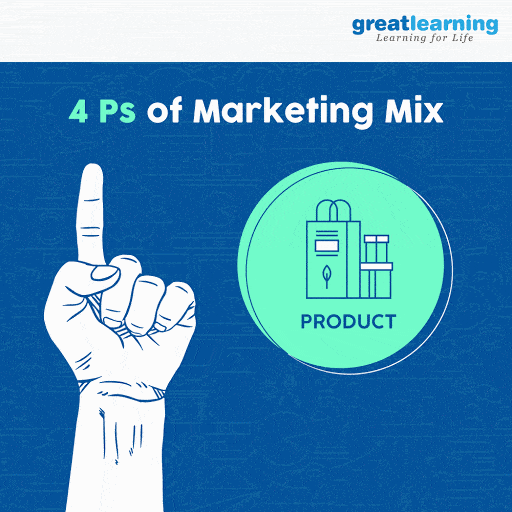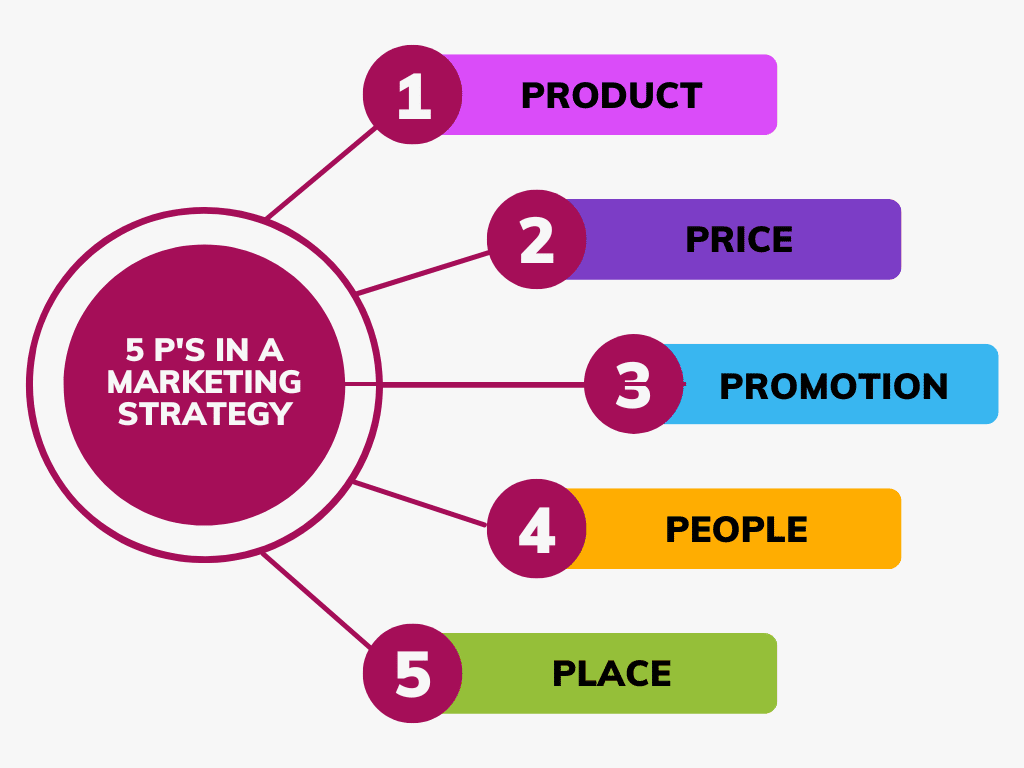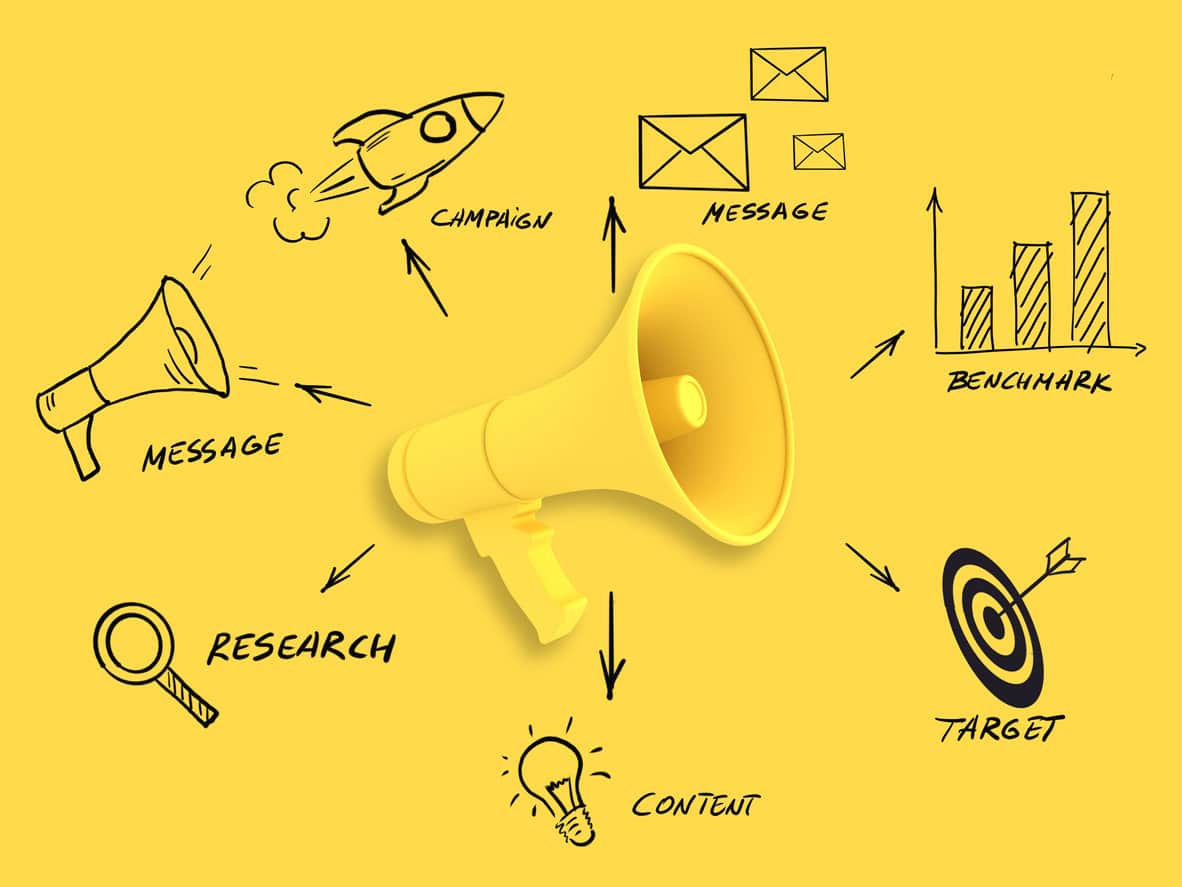- Introduction
- What Is a Marketing Strategy?
- What is the process of creating a marketing strategy?
- Importance of Marketing Strategy
- Marketing Strategies vs. Marketing Plans
- Benefits of a Marketing Strategy
- What is included in a marketing strategy?
- How to Create a Marketing Strategy?
- What do the 5 Ps mean in a marketing strategy?
- Examples of successful marketing strategies
- Conclusion
- FAQs
Introduction
A marketing strategy refers to the long-term plan that a company has developed to achieve specific organizational goals. The plan describes how the company will reach its target market and the exact process to convert potential customers into actual consumers of its products and services.
What Is a Marketing Strategy?
A marketing strategy refers to the overall strategy of a company to reach potential consumers and convert them into customers for its products and services. A thorough marketing strategy includes the 4 Ps of marketing – Products, prices, places, and promotion.
A clear marketing strategy tells consumers what the company represents, how it operates, and why it is worthy of your business.
With it, the marketing team provides a template to inform initiatives for all of the company’s products and services. For example, Jio-mart is widely known as a “daily low price” discount store and operates and markets based on this concept.
What is the process of creating a marketing strategy?
The advertising, outreach, and public relations efforts that a company will run are all outlined in a marketing strategy, along with how the business plans to evaluate the results of these endeavors. The four Ps of marketing—product, pricing, place, and promotion—will normally be followed.
Importance of Marketing Strategy
- Creating a marketing strategy is important to set the direction of your entire business.
- A marketing strategy can give an organization an edge over its competitors.
- The strategy helps develop products and services with the highest profit potential.
- A marketing strategy helps you discover areas that will be impacted by your business growth, thereby helping you create an organizational plan that addresses your customers’ needs.
- Helps determine appropriate pricing for an organization’s goods and services based on information gathered through market research.
- The strategy ensures effective cross-departmental coordination.
- Help companies maximize their resources to reach their target market with their sales message.
- A marketing strategy helps set advertising budgets in advance and develops a method to determine the plan’s scope. Determine the revenue generated by your advertising plan.
- Simply put, a marketing strategy articulates how an organization will achieve its goals.
Marketing Strategies vs. Marketing Plans
| Marketing strategies | Marketing Plans |
| A marketing strategy is outlined in a marketing plan. | A marketing plan is a document that describes the specific type of marketing activities a company undertakes and provides a timeline for initiating various marketing initiatives. |
| Ideally, marketing strategies have a longer lifespan than individual marketing plans, as they contain a corporate brand value proposition and other key elements that generally remain constant over time. In other words, a marketing strategy covers the overall message. | A marketing plan details the logistics of a particular campaign. |
| A marketing strategy outlines your overall value proposition. | A plan outlines your monthly, quarterly, or yearly marketing efforts. |
| Marketing Strategy: Enter a new market segment. | Market Plan: Develop marketing campaigns that reach, identify and focus on specific segments. |
| For example, a marketing strategy may state that a company seeks to increase its authority in the niche circles that its customers visit. | The marketing plan does this by soliciting thought leadership posts on LinkedIn. |
Marketing Strategy -> Marketing Plan -> Implementation = Successful Marketing Strategy
Benefits of a Marketing Strategy
The ultimate goal of any marketing strategy is to gain and communicate a sustainable competitive advantage over competitors by understanding consumer needs and desires. Whether it’s print ad design, mass customization, or social media campaigns, marketing assets can be judged by how effectively they communicate a company’s core value proposition.
Market research charts the effectiveness of specific campaigns and identifies underutilized audiences to help you reach your revenue goals and drive more sales.
What is included in a marketing strategy?
A marketing strategy uses high-level elements to determine a company’s current value position and outline its future marketing direction. It usually includes:
- Marketing results: The end result that the company wants to achieve
- SWOT analysis: Internal and external review of the organization to determine its strengths, weaknesses, opportunities and threats
- Target group: The ideal customer your company wants to reach
- Budget: money allocated for marketing activities
- Product composition: Analysis of products, prices, locations, and advertisements – key ingredients for successful marketing
A marketing strategy is developed after detailed market research. A marketing strategy helps an organization focus its scarce resources on the best opportunities to increase sales.

How to Create a Marketing Strategy?
Steps to create Marketing Strategy:
- Set definable business goals
- Identify and research the target market
- Create your message
- Define your budget
- Determine your channels
- Measure your success
- Creating a marketing strategy requires several steps.
- Identify your goals – Selling is the ultimate goal of any business, but you should set short-term goals such build authority, improve customer loyalty, or generating leads. These small goals provide measurable benchmarks for your marketing plan’s progress. A company’s vision and goals are the driving force behind its marketing strategy. These overall goals help determine the marketing goals that your marketing strategy delivers.
- Marketing goals – They are based on business goals. You can aim to achieve a certain market share, dominate a certain channel, or reach a certain percentage of a certain type of consumer. Goals should be achievable and measurable.
- Know Your Customer: Every product or service has an ideal customer and you need to know who they are and where they are located. Determine who your customers are and how your product will improve their lives. The goals you set help define the target market you pursue. To do this, you need to familiarize yourself with the customers of that market. This requires some market research and analysis. You need to determine the following about your target market and its customers:
- Market size and growth potential
- Market trend
- Competitor
- Geographical and demographic characteristics
- Customer behavior
- Compose your message : This is your chance to show prospects how your product or service can help them and why you are the only company that can offer it.
- It is important to identify the main benefits of the product under development. That is, how the product best meets the customer’s wants and needs.
- Define your budget : How you distribute your message depends on how much you can afford. Buy Ads or organically craving viral moments on social media or send press releases to the media to get coverage. Your budget dictates what you can afford.
- Decide on a channel : Even the best messages need the right place. Some businesses may find value in creating blog posts for their website. Some find success with paid advertising on social media channels. Find the perfect place for your content.
- Measure success: To target your marketing, you need to know if you are reaching your target audience. Determine metrics and how to measure the success of your marketing efforts.
What do the 5 Ps mean in a marketing strategy?

- Product
- Price
- Promotion
- Place
- People
The 5 P’s are product, price, promotion, place, and people. These are important factors involved in marketing your products and services. They can be used when planning a new business venture, evaluating an existing product, or trying to optimize sales with a target audience. It can also be used to test your current marketing strategy against new audiences.
Examples of successful marketing strategies
Let’s discuss 14 extraordinary marketing strategies and campaigns from big-name brands like Red Bull, Nike, and Google. Here are the well-known examples of how these brands come to market, with links to each case study in detail.
Airbnb's marketing strategy uses four tactics that make it stand out. Airbnb is a software company that allows homeowners to rent properties such as homes and apartments as a competitor to traditional hotel stays. Four tactics include building a reachable community, leveraging user-generated content, pursuing a clear and unique value proposition, and creating a referral program.

Disney's marketing strategy also uses four tactics to differentiate its products from its competitors. Disney is adept at telling stories that resonate and inspire by using nostalgia to strengthen customer loyalty, targeting audience segments with multi-channel strategies, and staying true to its own brand.
Pepsi’s marketing strategy is unique through branding, sponsorships and endorsements, social media engagements and partnerships, and taking risks to stay on trend.
Conclusion
Marketing is about connecting with customers, not just advertising and promotion. A marketing strategy is a company’s strategy for reaching potential consumers and converting them into customers for its products and services. A marketing strategy sets the direction for all product and marketing-related activities.
A marketing strategy helps keep all activities on track. Developing a marketing strategy involves setting goals, researching the market, creating product roadmaps, and defining marketing initiatives.
Your marketing strategy should revolve around your company’s value proposition. The ultimate goal of any marketing strategy is to achieve and communicate a sustainable competitive advantage over your competitors.
Marketing Blogs to Read:
FAQs
Marketing is connecting your business to potential customers and connecting those customers to your product. It is about understanding customer needs, translating those needs into products and services, packaging and pricing those products and services, and convincing customers that they should buy those products and services.
Market Penetration Strategy – A market penetration strategy is when a company focuses on selling its services or products to existing customers. This marketing strategy focuses on retaining existing customers rather than acquiring new customers. The point of this strategy is to solidify the company’s position within the industry.
Market Development Strategy – When a company decides to expand its sales into new markets, it works on a market development strategy. This endeavor can be risky due to unknown factors, but it is also beneficial for revenue and brand growth. A successful market development strategy can take considerable time.
Product Development Strategy – Making changes or new products to sell to customers is called Product Development Strategy. We can also extend our current offerings to target your target market better. Testing new products and services can take a lot of time, but a good strategy can help your business grow exponentially.
Diversification Strategy – A diversification strategy is about introducing new products and services to new markets, like starting a new business. Unless very well planned, diversification strategies can be risky and require a lot of patience, but the rewards can be amazing.
A marketing strategy is a long-term plan of business goals that a company wants to achieve. In order to achieve this, it is important to properly choose specific actions to enhance the reputation of the product or service or increase sales in the market.
Seizing opportunities is essential for finding target markets, retaining customers and strengthening company positioning.
Example – Email Marketing Strategy: According to Statista, 4 billion people check email every day. Statista also estimates that sales will reach about 11 billion by his December 2023. It is highly likely that your target audience will use this channel.
When formulating your marketing strategy, you should focus on his 7Ps of traditional marketing.
Products – how to meet customer needs
Price – how much the customer is willing to pay for the product
Promotions – Channels used to inform customers about products
Place – where you sell your product
People – the person who helps sell the product to the customer
Packaging – how the product is presented to the customer
Process – how the product gets to the customer
Customer – A customer is any interest group that a company serves. These can be current customers, potential customers and even investors.
Cost – Cost refers to the amount of money required to sustain a business. This includes costs, prizes and profits.
Communication – Communication refers to how information is shared with customers at any touchpoint (in person, online, or over the phone).
Channels – Channels refer to all the different distribution channels available for the transportation of goods and services.








